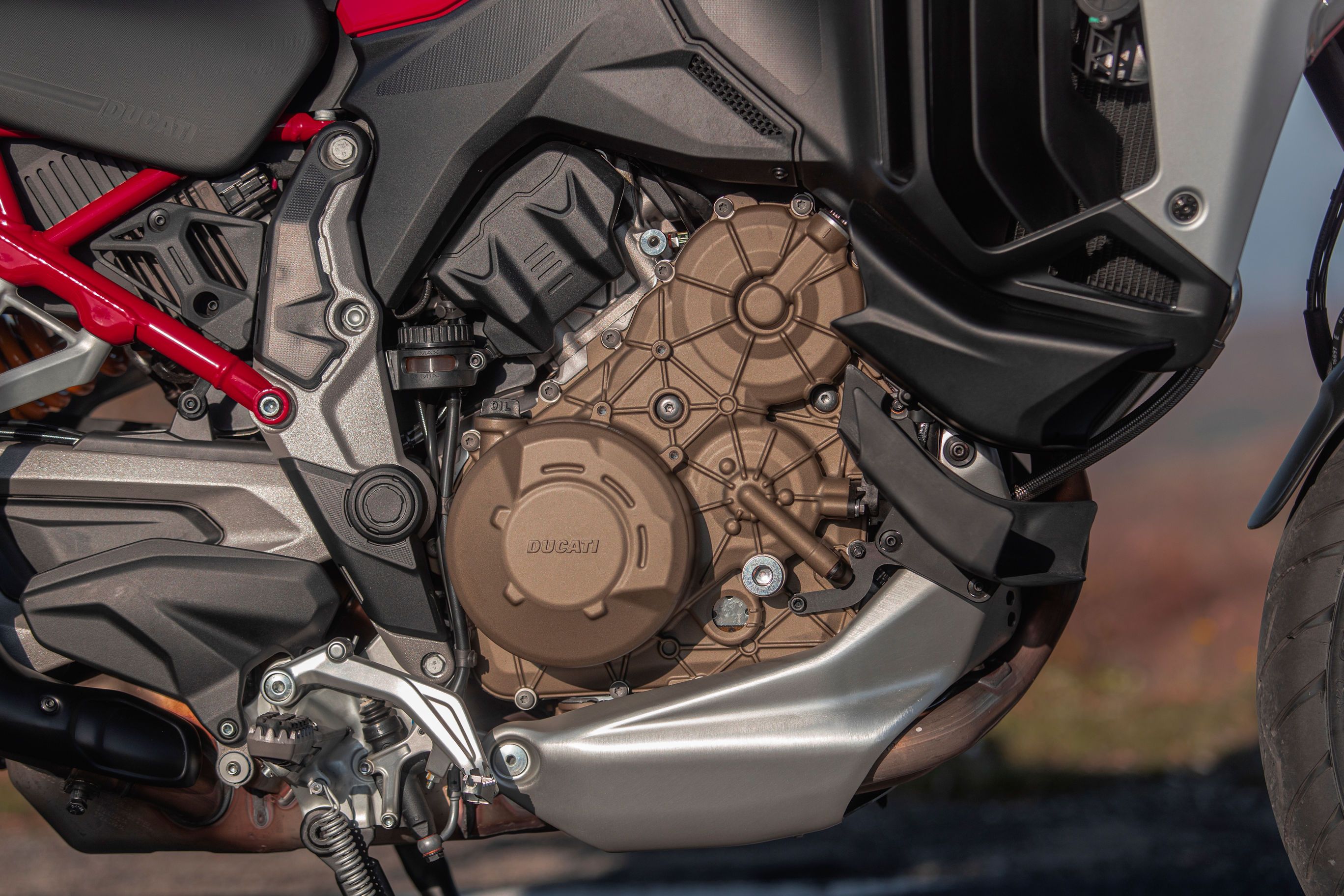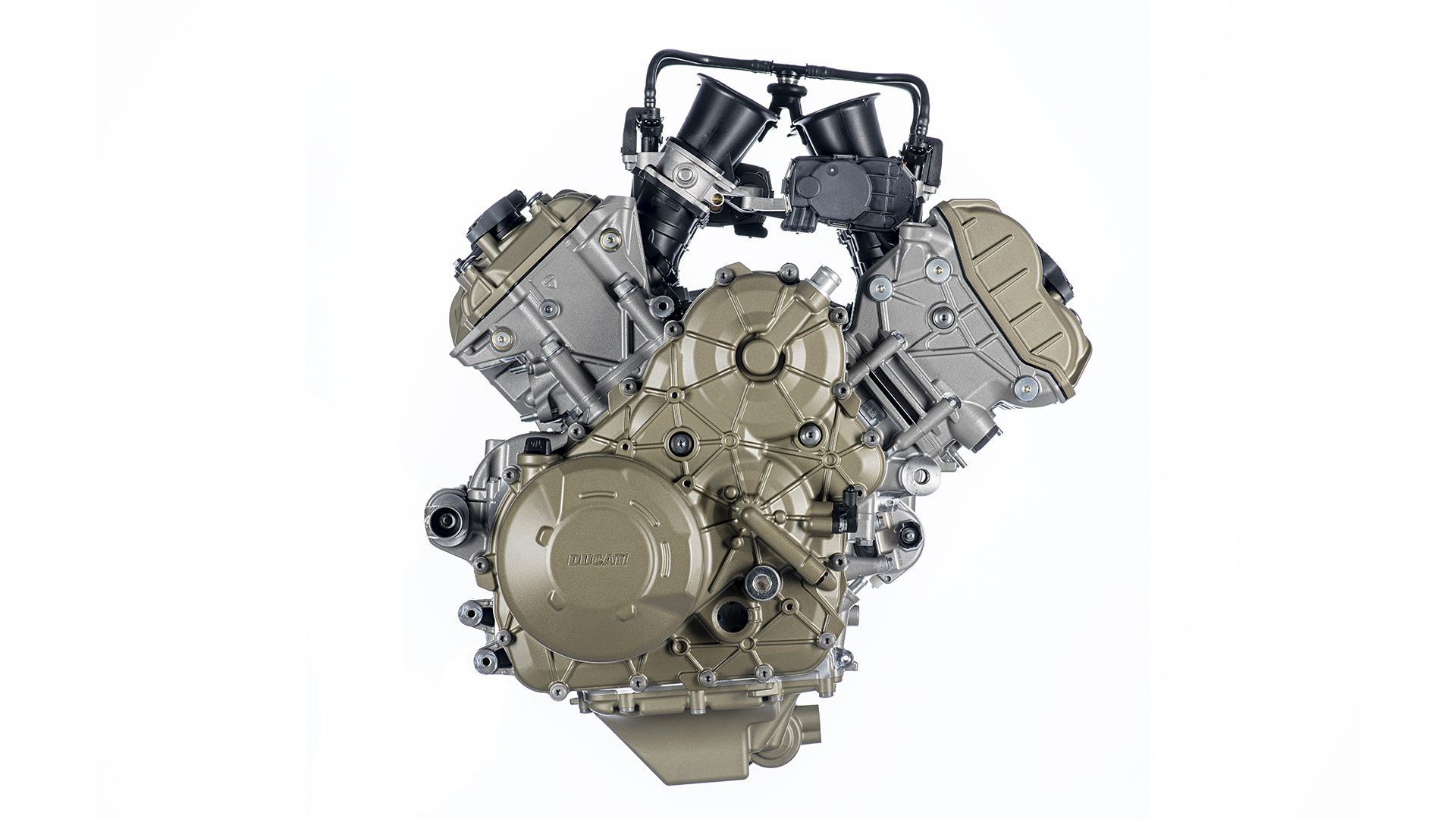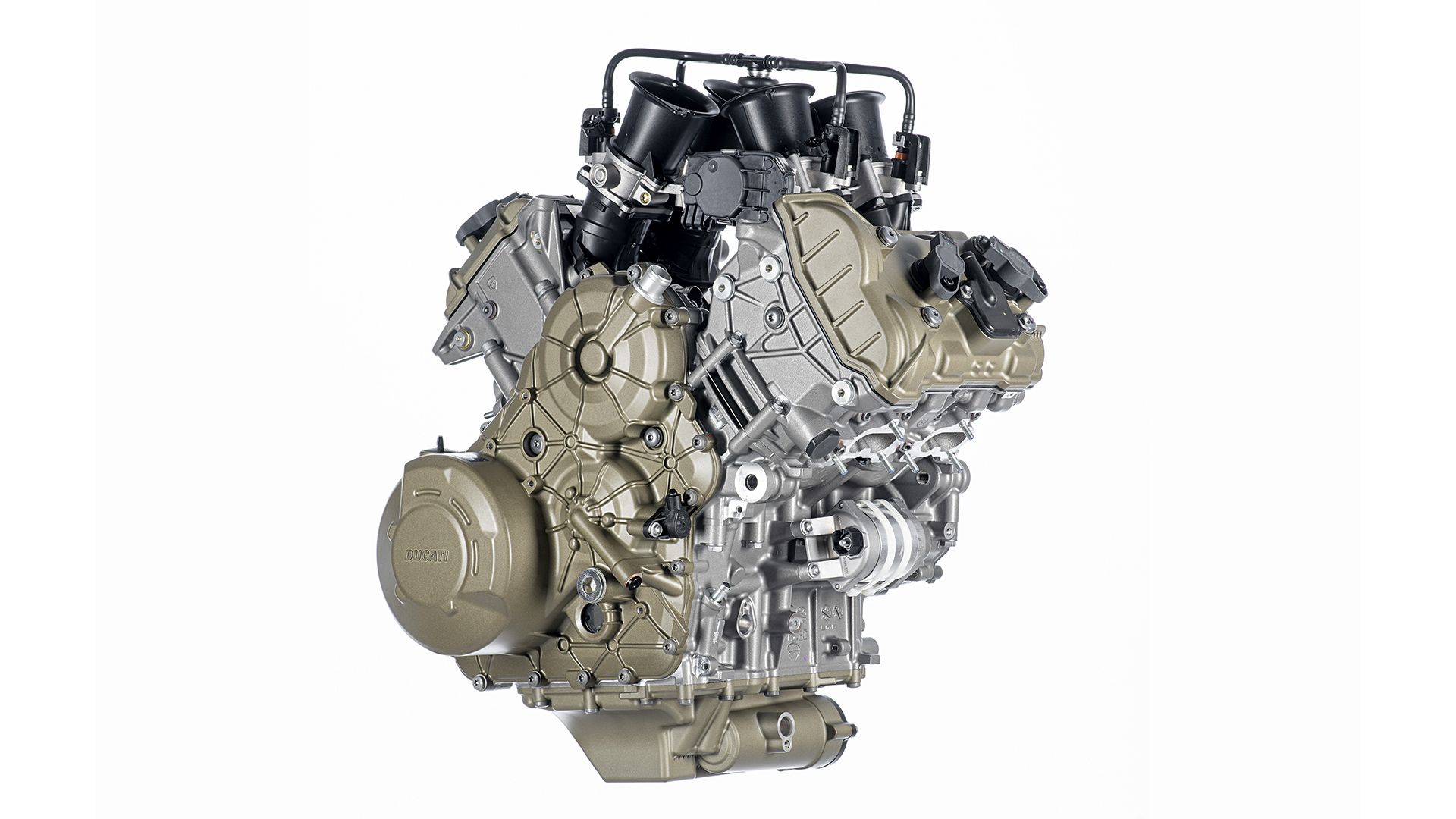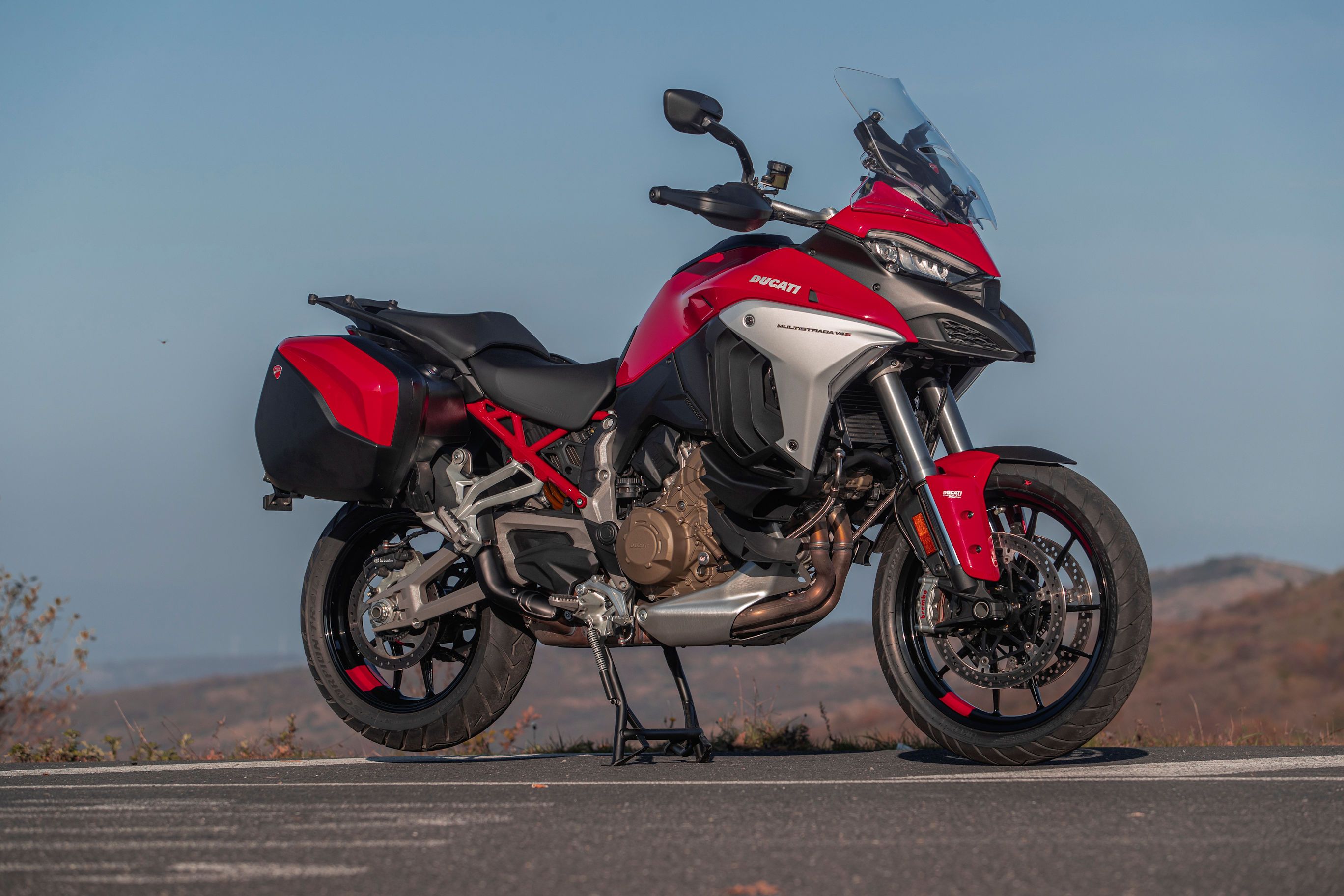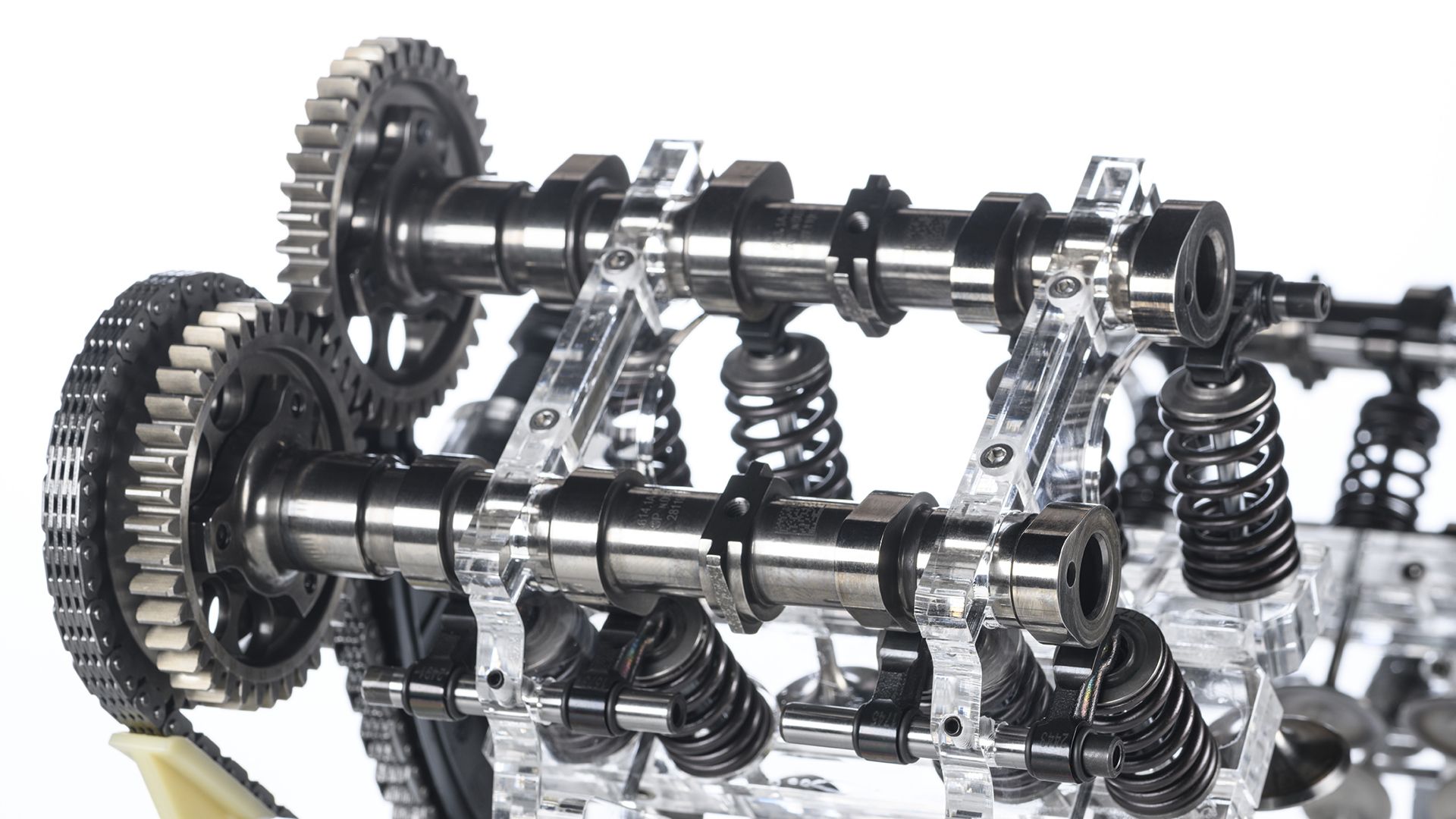Ducati progresses the fight for sportbike dominance with its new V4 Granturismo engine. Rather than pigeonholing the plant in just a narrow slice of bikes, Ducati built this engine to be a viable choice for use on street, track, and dirt. Electronics change the lump's personality to suit a wide range of applications to give it a healthy dose of versatility. Plus, it comes in a compact package that is significantly shorter to allow for lower seat heights and further expand its candidacy throughout the factory's range of platforms.
The V4 Granturismo Project
“We started by defining its displacement. Working on a large bore, we were able to avoid having a “long” and “high” engine, which would have meant excessive seat height, an unmanageable centre of gravity and little ground clearance, thus heavily compromising off-road riding,,” says V4 Granturismo Project Leader Andrea Levati. “The maximum compactness of a short engine was also the key to increased handling. From its compact engine, easy to place in the vehicle's layout, came a precise center of gravity positioning and a more effective chassis, whose end result is an agile, easy-to-ride bike. We managed to reach an ultra compact volume, even more than the previous Testastretta DVT twin-cylinder engine of the Multistrada 1260. It is lighter by 1.2 kg, 85 mm shorter and 95 mm lower, despite a width increase of only 20 mm. We exceeded our best expectations, so much so that, once assembled in CAD, we could not believe how much space was still available!. From its compact engine, easy to place in the vehicle's layout, came a precise center of gravity positioning and a more effective chassis, whose V4 Granturismo runs with DOHC and finger-followers that actuate four poppets per cylinder and rely on spring closure. We managed to reach an ultra compact volume, even more than the previous Testastretta DVT twin-cylinder engine of the Multistrada 1260. It is lighter by 1.2 kg, 85 mm shorter and 95 mm lower, despite a width increase of only 20 mm. the service interval on the valve-lash adjustment up to 37,000 miles!."
The excitement is palpable, and why not? Ducati clearly has a winner on its hands with this new engine.
Further Reading
Unlike so many of Duc's Desmodromic powerplants, the Read more Ducati news.. More than any other factor, the valvetrain brings the service interval on the valve-lash adjustment up to 37,000 miles (60,000 km) for a significant advantage over the cam-closure arrangement on the Desmo top ends.
Not only is the engine smaller in almost every dimension than the L-Twin it replaces, it's also lighter. But that's not the best part, oh no. The V4 engine runs with a 90-degree offset in the cylinders and a 70-degree firing order on the crank. A “Twin Pulse” ignition makes the exhaust note sound like a twin instead of a four-banger, and it delivers a respectable performance profile. Lightweight internals reduce both rotating and reciprocating mass to limit mechanical losses and allow it to safely reach for the five-digit rpm range. It churns out 170 horsepower from its 1,158 cc displacement at a lofty 10,500 rpm, and the torque backs that up with 92 pound-feet at 8,750 rpm. Naturally, power-to-weight will depend on the platform, but rest assured this mill would be a boon to almost any bike in the lineup. Also, for rider comfort, it rocks a rear-cylinder deactivation feature that kills the rear jugs when idling at a stop, not entirely unlike Indian's RCD system.
Now the only questions that remain is which bikes will be blessed with this new beating heart, and how much it will add to the sticker. Time, my friends, will tell us both.
Further Reading
Ducati
Read more Ducati news.

